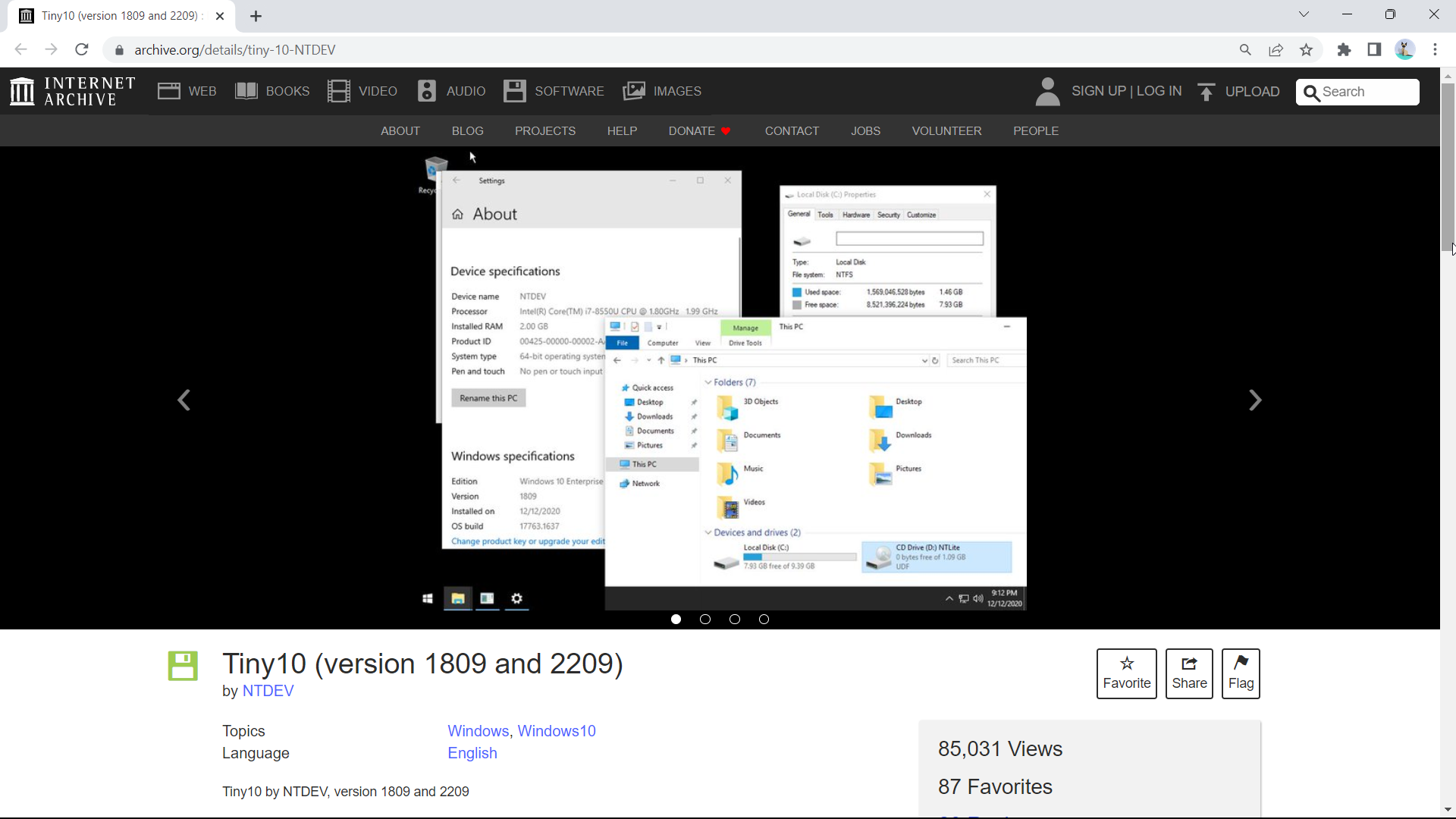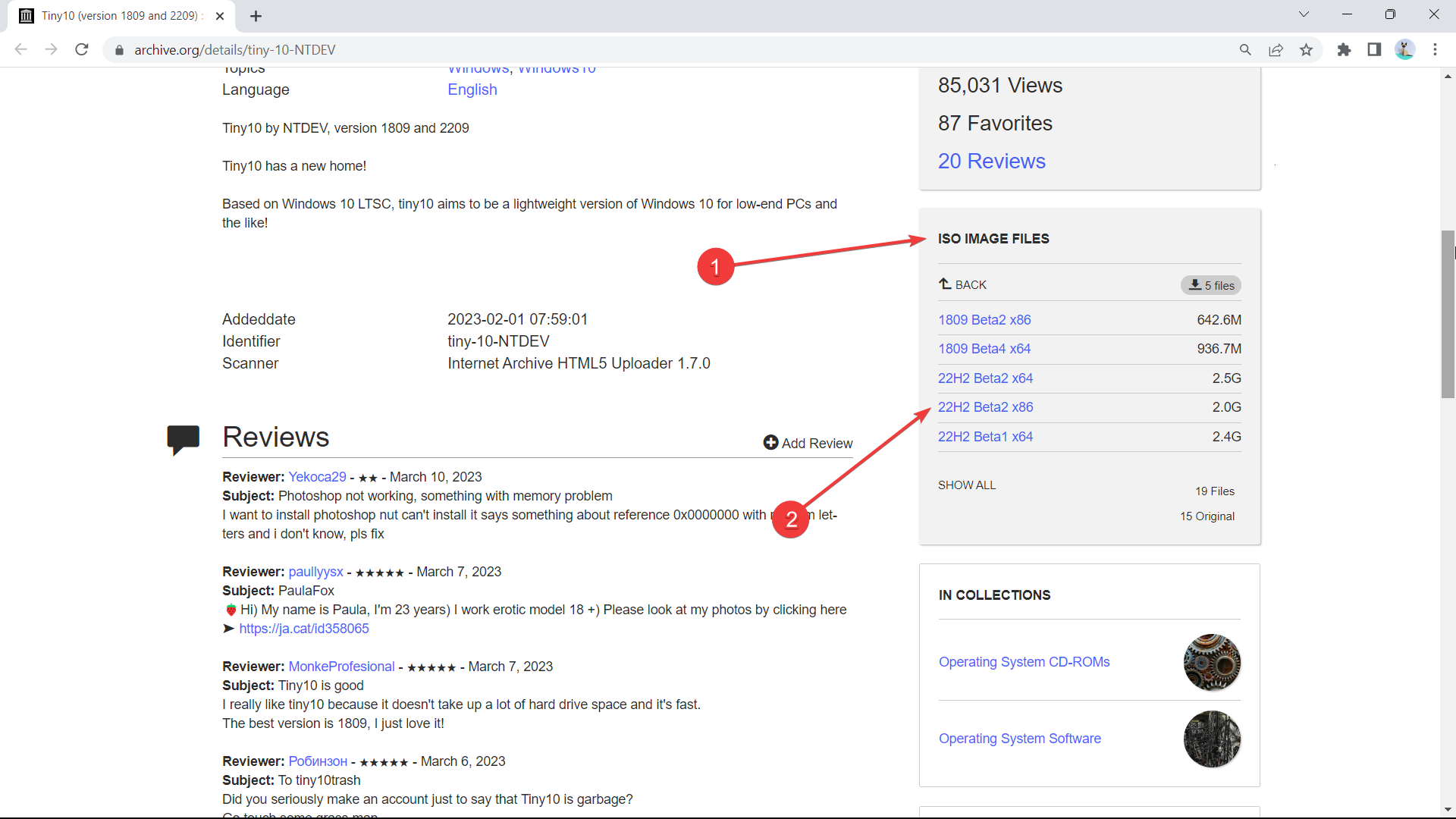Tiny10 for Windows 10: Download & install the latest version
Perfect for low-end PCs.
2 min. read
Updated on
Read our disclosure page to find out how can you help Windows Report sustain the editorial team. Read more
Key notes
- NTDEV released tiny10 2303 x86 for Windows 10.
- The tool allows you to run the operating system under limited resources.
- Find out how it works and how you can download it here.

Just like what NTDEV did for Windows 11 by releasing tiny11, a debloated version to help low-end PCs to run the operating system under limited resources, the devs also have something similar for Windows 10.
Dubbed tiny10, the tool allows you to bring all Windows 10’s functionalities to life for desktops with limited specifications. Its latest edition, tiny10 2303 x86, also features the component store, the Remote Desktop feature, and serviceability—with a fully functional Windows Defender.
It’s basically a stripped-down version of Windows 10, which only takes 5.2 GB (32-bit system) and 10 GB (10 GB) of disk space compared to Windows 10’s 22 GB storage requirement. In terms of RAM, you only need at least 1 GB on a 32-bit system and 2 GB on a 64-bit system.
Without further ado, here’s how to download and install tiny10 for Windows 10.
H2: How to download tiny10 for Windows 10.
1. Head over to NTDEV’s site on Internet Archive.

2. On Download options, click ISO image.

3. Choose whichever fits your need. In this case, we’re choosing 22H2 Beta2 x86.
Despite its polarizing reviews, tiny10 is still a good tool for developers and software enthusiasts alike who are keen to use Windows 10. The rule of thumb for it, however, remains the same: expect the tool to run into some sort of limitations.
On the other hand, you can also check tiny11 for Windows 11. It’s much more impressive even—some users even reported tiny11’s installation under 100 MB of storage, albeit slower and limited to only the command prompt and some rudimentary batch files work.
What do you think about this tool? Let us know in the comments!











User forum
0 messages